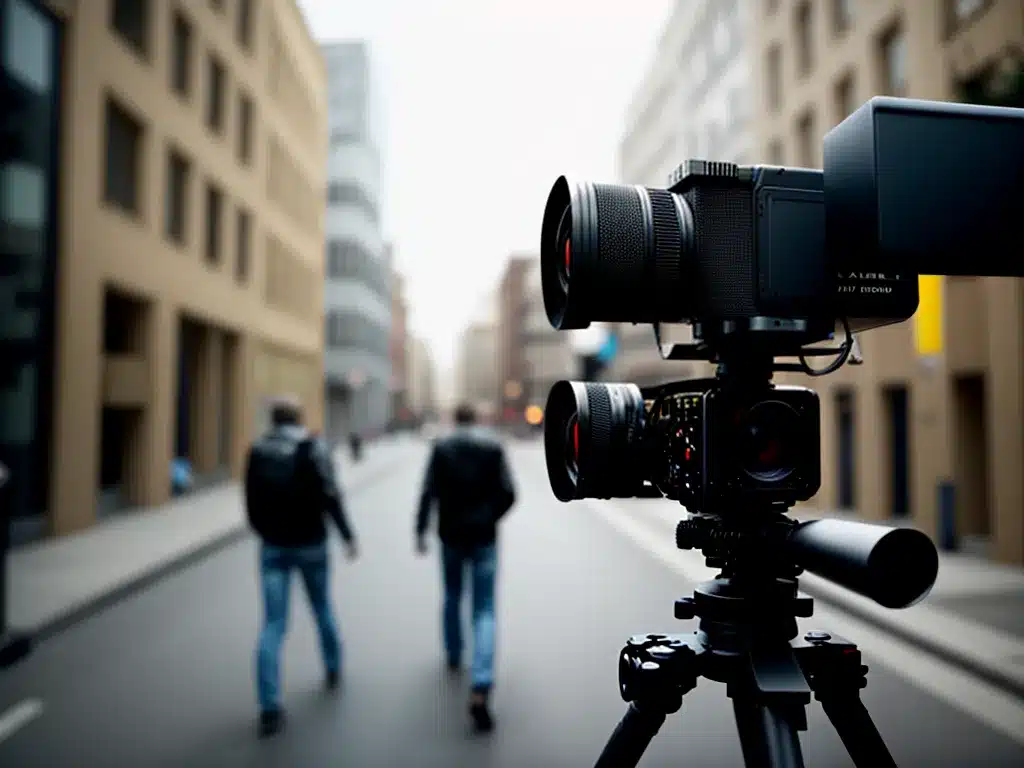
Introduction
Virtual cinematography opens up exciting possibilities for creative storytelling in games, animations, and other digital media. The camera is an often overlooked but incredibly powerful tool for controlling the viewer’s experience and conveying narrative elements visually. With virtual cameras, creators have unlimited options for camera placement, movement, and effects. Mastering cinematic camera techniques can lend a sense of drama, suspense, scale, and flow to your scenes. In this guide, I will share tips and techniques for leveraging camera moves to enhance visual storytelling.
Essential Camera Moves and Shots
The Establishing Shot
An establishing shot provides a wide view of the scene location and subject matter. It sets the stage and provides context for the viewer before cutting to closer shots. Establishing shots help orient the audience and can convey a sense of mood, place, and scale. For example, an extreme wide shot of a lonely house on a foggy hill establishes an eerie, isolated mood.
The Tracking Shot
A tracking shot involves having the camera physically move through space to follow a subject or reveal more of the environment. Tracking shots create a sense of three-dimensional space and can build tension or suspense. For example, the camera could start close on a character’s face before tracking backward to reveal a looming threat.
The Panning Shot
Panning means rotating the camera horizontally on a fixed axis. Panning shots gradually reveal more of a panoramic scene or follow a moving subject. Quick pans can create kinetic energy, while slow pans establish scope and grandeur. Try panning up from a close-up of a character to an epic mountain vista.
The Tilt Shot
Tilting involves rotating the camera vertically on a fixed axis. A tilt can dramatically shift the frame from a low angle to a high angle perspective or vice versa. Low-angle tilts lend a sense of power and importance to subjects, while high-angles can make them seem small and vulnerable.
The Aerial Shot
An aerial shot is taken from a crane, drone, or other airborne apparatus. Aerials provide unique high-altitude perspectives and a bird’s eye view of expansive scenery. They are ideal for establishing scale and scope. Position your aerial cameras thoughtfully to showcase sprawling geography or bustling crowds.
The Crane Shot
A crane shot involves raising, lowering, or moving the camera through space with a jib or crane mount for fluid, sweeping motions. Used skillfully, crane shots can generate awe, amplify emotional peaks, and dynamically reveal different aspects of a location.
The Dolly Zoom
The dolly zoom combines zooming with dollying (moving the camera toward or away from a subject). This creates a powerful warping effect emphasizing the subject against the distorted background. Used sparingly, dolly zooms highlight critical moments and disorient the viewer.
The Handheld Shot
Handheld shots use cameras that are held by the operator rather than mounted on supports. The floating, shaking movements create a raw, gritty, you-are-there look. Handheld can bring a sense of human perspective, tension, and immediacy to both action sequences and emotional moments.
Composing Shots for Maximum Storytelling Impact
Thoughtful shot composition is crucial for cinematic storytelling. Keep these tips in mind:
-
Lead the viewer’s eye by strategically placing subjects and elements based on principles like the rule of thirds.
-
Convey meaning through framing, such as enclosing a subject with walls to suggest feeling trapped.
-
Motivate camera movement so it feels intentional, not random. Move to follow a subject, lead the viewer, or reveal new information.
-
Use camera height deliberately, with high angles for weakening a subject and low angles for empowering them.
-
Choose angle and distance appropriately by going wide to show expansive scenery or coming in close to focus on emotions.
-
Use depth of field creatively to emphasize or deemphasize elements based on sharpness.
Camera Movement for Pacing and Tension
The speed, smoothness, and pattern of camera motions greatly impact the mood and tension of a scene. For example:
-
Slow, creeping camera moves build anticipation and dread for horror or mystery genres.
-
Energetic whip pans and tracking shots lend action scenes a sense of speed and chaos.
-
Smooth, floating camerawork lends dreamy or detached emotional tones.
-
Sudden starts and stops in motion jar the viewer and accentuate shocks or scares.
-
Break up prolonged camera moves with occasional pauses to reset the eye and avoid monotony.
Conclusion
Whether you’re crafting quick cutscenes or hour-long animated features, virtual cinematography offers a versatile storytelling tool. With some knowledge of camera move fundamentals, composition techniques, and a sense for pacing, you can imbue your scenes with mood, emotion, and dramatic flair. Experiment with different shots, play with camera motion, and study how master directors use cinematography to find your own distinctive visual storytelling voice.












